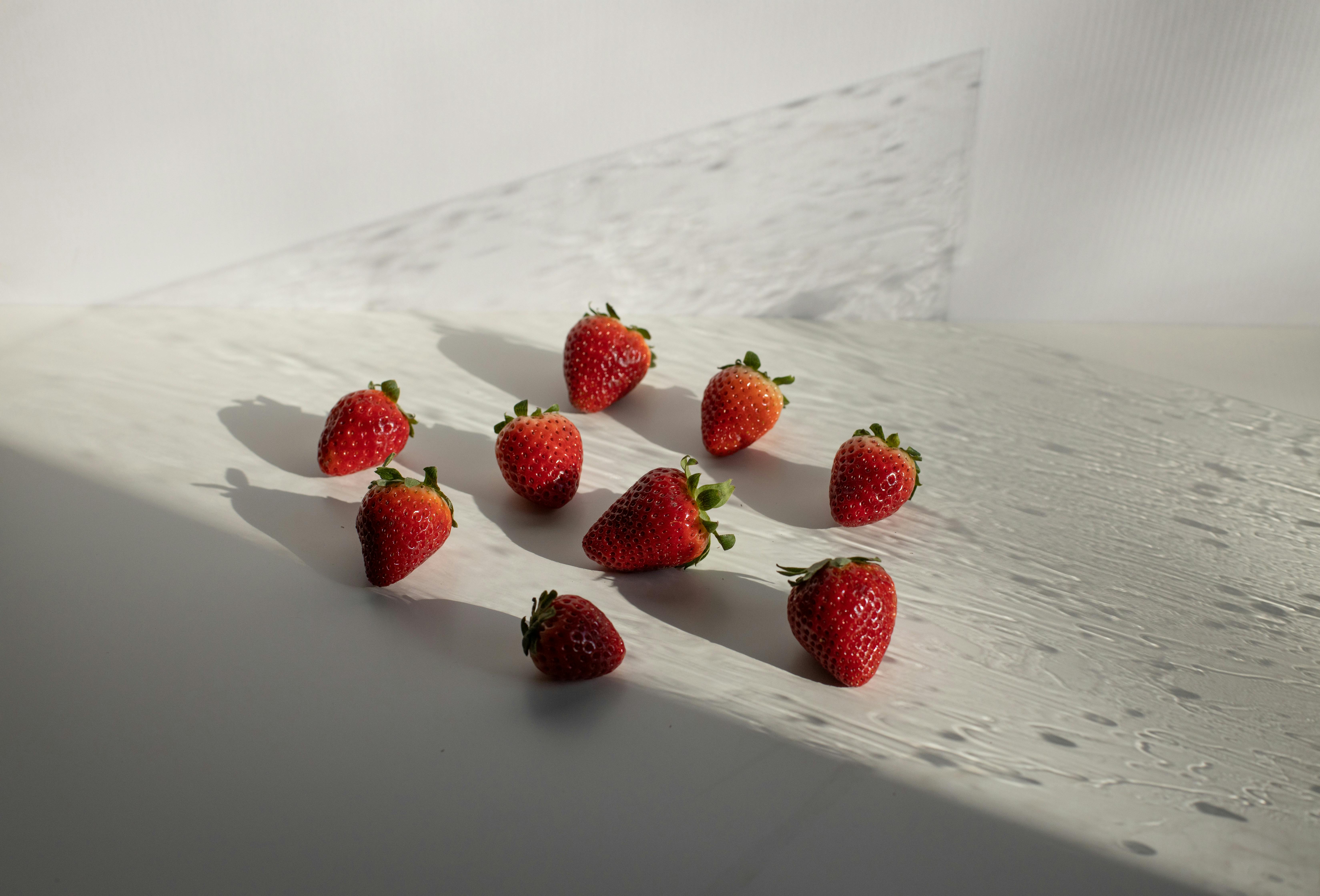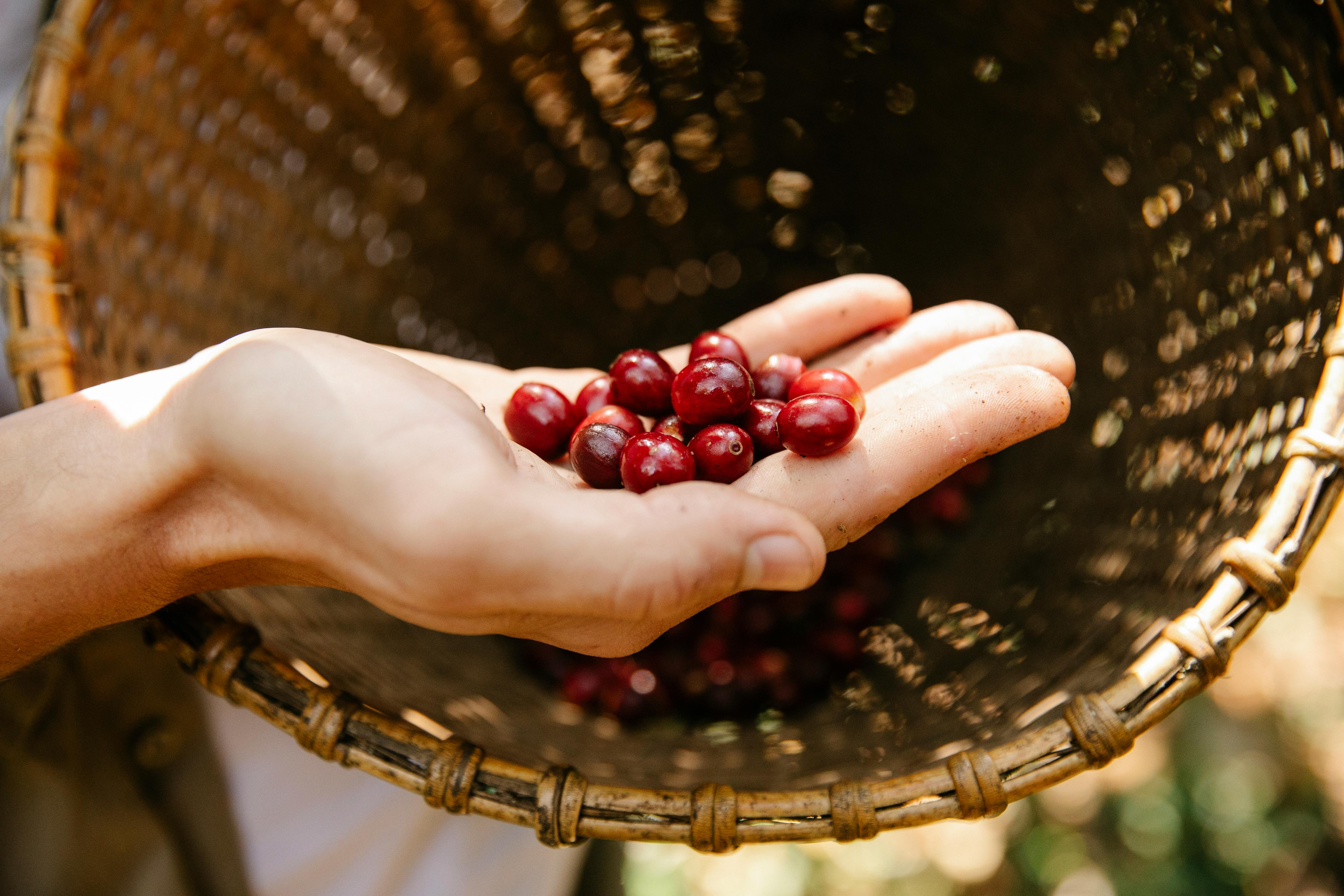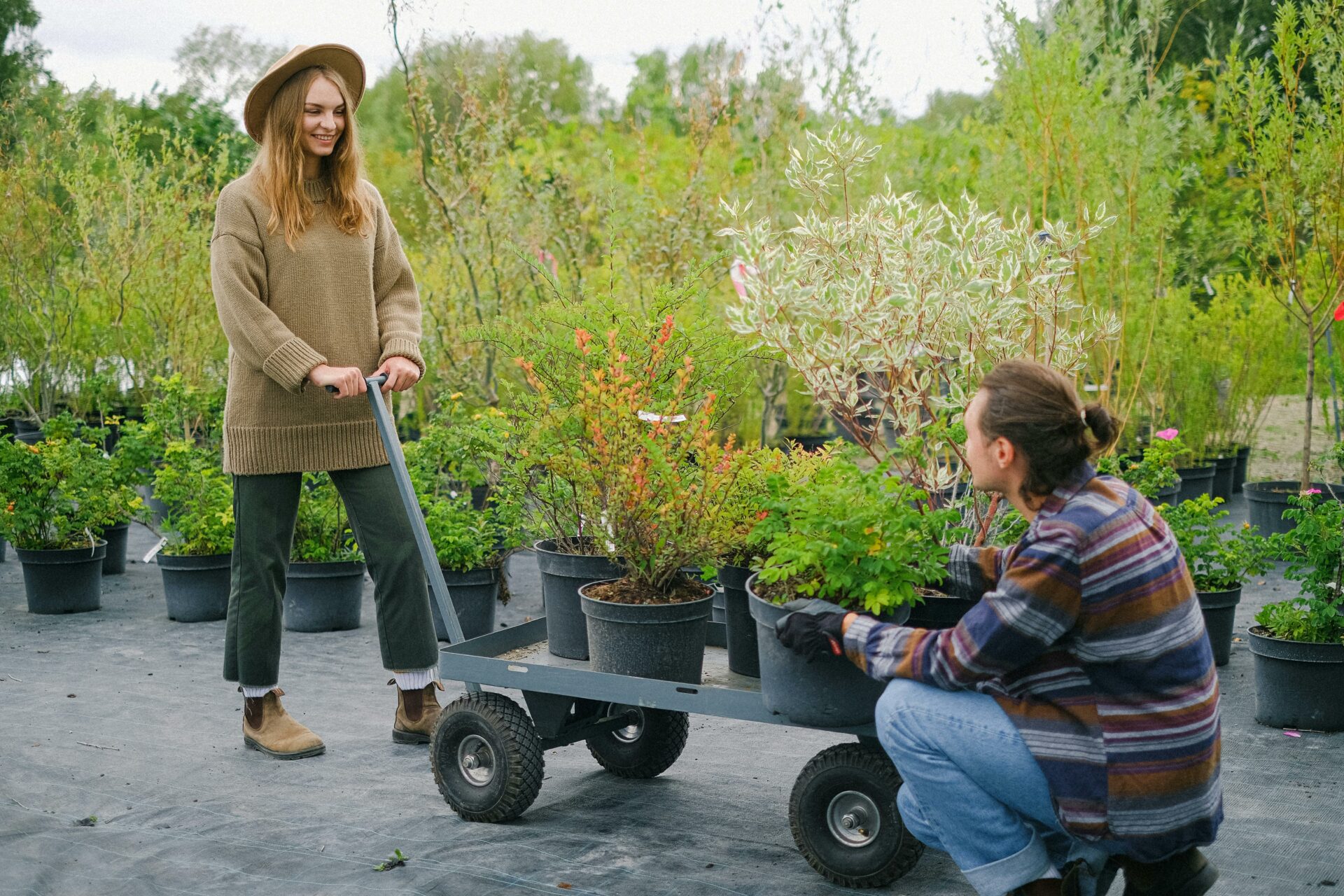Planting in a strawberry planter is a great way to enjoy fresh, homegrown strawberries without taking up too much space. Growing your own strawberries can be both rewarding and cost-effective, and with the right planter and supplies, can be simple too. In this guide, we will cover the basics of planting in a strawberry planter—from selecting the right planter to choosing the right soil mix and strawberry variety for your climate. With these tips, you’ll be well on your way to enjoying sweet strawberries all season long!When choosing a strawberry planter, there are several factors to consider. First, decide on the size and shape of the planter. Consider how much space you have to work with and how many strawberry plants you want to grow. If you’re limited on space, a hanging planter may be the best option.
Next, think about the material of the planter. Plastic planters are usually lightweight and affordable but won’t last as long as a ceramic or terracotta planter. Consider which material will work best for your environment and needs.
Finally, check that the strawberry planter has ample drainage holes at the bottom so that excess water can escape without flooding your plants. Make sure it also has enough room for soil and compost so that your strawberries have plenty of nutrients to grow healthy and strong!
Step 1: Collect the Required Supplies
Before you begin, it is important to collect all the supplies necessary for planting strawberries. You will need a planter, soil, fertilizer, and strawberries. You can purchase these items at your local garden center or online. It is also important to make sure that you have a good pair of gloves to protect your hands from any potential hazards while planting.
Step 2: Preparing the Planter
Once you have all the supplies ready, you can start to prepare the planter. Begin by washing the planter with warm soapy water. This will help to remove any dirt or debris that may be on it. Once it is clean and dry, fill it with potting soil and make sure that it is evenly distributed throughout the planter.
Step 3: Adding Fertilizer
Once the planter has been filled with soil, it’s time to add fertilizer. There are many different types of fertilizer available for use in strawberry planters. The type of fertilizer that you choose should depend on what type of strawberries you are planting as well as other factors such as soil pH level and climate conditions in your area. Once you have chosen a fertilizer, add it to the soil according to package instructions and mix it in well.
Step 4: Planting the Strawberries
Now that your planter is ready, it’s time to plant your strawberries! Start by gently loosening up some of the soil in each section of the planter where you will be planting a strawberry plant. Place each plant into its own section of soil and then gently press down on each one to ensure good contact with the soil below.
Step 5: Watering and Caring for Your Strawberries
Now that your strawberry plants are planted, they need water! Use a watering can or garden hose to water them until they are thoroughly moistened but not soggy. Make sure not to over-water them as this can lead to root rot or other issues with your plants. In addition, be sure to provide them with plenty of sunlight and adequate nutrients throughout their growing season.
By following these simple steps, you can easily prepare a strawberry planter for successful growth and bountiful harvests!
Planting Strawberries in a Pot
Growing strawberries in a pot is an easy and rewarding way to enjoy sweet, juicy fruit at home. Pots provide the perfect environment for strawberries to thrive, as they are able to be moved around for optimal sun exposure and drainage. With the right kind of soil and a few simple steps, anyone can plant strawberries in a pot and enjoy their sweet fruits all season long.
The first step to successfully planting strawberries in a pot is to prepare the soil. A well drained soil is key for strawberry plants, as they are prone to root rot if left in soggy soil for too long. A combination of potting soil, sand, and compost is the perfect mix for growing strawberries. This mixture should be slightly acidic, with a pH level between 5 and 6 being ideal.
Once the soil is prepared, it’s time to choose a pot. Strawberry plants prefer shallow containers with plenty of drainage holes at the bottom. If using plastic pots, make sure they have dark green or black bottom so that sunlight does not enter through them and heat up the roots of the plant. Terracotta pots are also great for growing strawberries as they absorb some heat from the sun during hot days while releasing it at night when temperatures drop.
When selecting strawberry plants, look for ones that are healthy and free from diseases or pests. Avoid any plants that have wilted leaves or discolored fruit as these can be signs of disease or pests that will only spread further once planted in your pot. Plant each strawberry runner about 3-4 inches deep into the soil mix and cover them up gently with more of your prepared mix. Water thoroughly after planting each one so that it has plenty of moisture when settling into its new home.
Water regularly but avoid over-watering your strawberry plants as this can cause root rot or other diseases that will damage your crops. To ensure proper drainage add gravel or small rocks at the bottom before filling with soil mix so excess water can easily drain away from roots while keeping them moist enough for healthy growth. Additionally, keep an eye out during hot days to make sure your strawberry plants don’t dry out too quickly due to evaporation or high temperatures.
With proper care and attention you can enjoy fresh strawberries from your own container garden all season long!
What Type of Soil is Best for Growing Strawberries?
Strawberries are a popular perennial fruit crop that can be grown in many soils, however there are certain characteristics that make them thrive. For best results, it is important to choose the right type of soil for strawberry plants. The ideal soil should have good drainage, a pH level between 5.5 and 6.5, and plenty of organic material.
Well-drained soil is essential for healthy strawberry plants as they may suffer from root rot if the soil does not drain properly. Sandy or loamy soils are usually the best choice for strawberry cultivation as they allow water to move through quickly while still holding onto some moisture and nutrients.
The pH level of your soil is also important for growing strawberries as too high or too low a pH can cause nutrient deficiencies in your plants. Most strawberry varieties prefer a slightly acidic soil with a pH level between 5.5 and 6.5, so you may need to adjust your soil accordingly before planting your strawberries.
Adding organic material such as compost or aged manure to your soil can also help improve its fertility and drainage characteristics. Organic matter helps create air pockets that allow excess water to drain away quickly while still allowing essential nutrients to be absorbed by the roots of the plant. It also helps improve the texture of clay or heavy soils which can be difficult for roots to penetrate.
By choosing well-draining, slightly acidic soils with plenty of organic matter, you can ensure that your strawberry plants get off to the best start possible and produce an abundant crop of delicious berries year after year.
Selecting the Right Plants
When selecting plants for your garden, it is important to consider the climate and environment in which they will be growing. Different plants require different amounts of water, sunlight, and soil conditions, so it is important to choose plants that are appropriate for the climate in which they will be growing. In addition to climate considerations, you should also think about the size and type of plant that you would like. Shrubs, trees, perennials, and annuals all come in a variety of sizes and shapes, so it is important to choose a plant that will fit into the overall design of your garden.
Once you have determined what type of plant you would like to grow in your garden, it is important to research its specific needs. Different plants require different amounts of water and sunlight depending on their species, variety, and age. It is also important to consider any pests or diseases that may affect the health of your plants. Researching these factors before purchasing a plant can help ensure that you get a healthy specimen that will thrive in its environment.
Finally, when selecting plants for your garden it is important to think about how much time you are willing to devote to taking care of them. Some plants require more maintenance than others, so if you do not have much time or experience with gardening then it may be best to choose low-maintenance varieties. Choosing the right type of plant for your garden will help ensure that your garden thrives for years to come.

Positioning the Strawberry Planter
Positioning the strawberry planter is an important step in growing healthy, delicious strawberries. The best location for a strawberry planter is in an area that receives at least 6 hours of direct sunlight each day. It should also be protected from strong winds and have good drainage. If possible, it is best to place the planter on a raised platform or terrace to ensure proper drainage. It is also important to keep the planter away from other plants that can spread diseases or pests.
When positioning the strawberry planter, you should also consider its size and shape. Smaller planters take up less space but may not be able to hold as many plants. Large planters may require more space but will be able to accommodate more plants. Depending on your available space and desired yield, you can choose the best size and shape of planter for your needs.
Finally, you should also consider the type of soil you will use for planting your strawberries. The soil should be light and well-drained with a pH between 6 and 7 for optimal growth. It is also important to choose a soil that has adequate nutrients for your plants so they can thrive and produce healthy fruits.
Watering Your Strawberry Planter
Watering your strawberry planter is an important part of maintaining a successful strawberry crop. An evenly and adequately watered planter will ensure that your strawberries have the best chance of producing healthy, delicious fruits. The amount of water needed for your strawberry planter will vary depending on the size, type, and location of the planter.
In general, it’s best to water your strawberries once or twice a week, depending on how much rainfall you get in your area. If rainfall is scarce or if you are using a container-based planter, you may need to water more often. Before watering, feel the soil in the planter to see if it is dry; if it is dry, then it’s time to water. When watering your strawberries, make sure to do so evenly and thoroughly; this means making sure that all areas of the planter receive an adequate amount of water.
When watering your strawberry plants, try to avoid getting any of the leaves wet as this can cause disease and rot. Using a watering can with a fine spray head is ideal for controlling where the water goes and can help avoid getting any of the leaves wet. Additionally, try to use lukewarm or room temperature water when watering as cold water can cause shock to the plants and reduce their growth rate.
It’s important not to over-water your strawberry plants as too much water can reduce fruit production and lead to root rot and plant stress. Over-saturated soil can also lead to diseases like crown rot which can kill off whole plants or entire patches of strawberries in a short time period. If you notice any signs of overwatering (wilting leaves or yellowing foliage), reduce the amount or frequency of watering until these symptoms disappear.
By following these tips for watering your strawberry planters correctly, you should have no trouble growing healthy and delicious strawberries!
Fertilizing Your Strawberry Plants
Fertilizing your strawberry plants is a key component of successful strawberry production. Strawberries require a balanced fertilizer that contains nitrogen, phosphorus, and potassium (NPK). The amount of fertilizer needed will depend on the size of the plant, soil type, and climate. To ensure adequate nutrition for your plants, fertilize them once or twice per growing season. It is also important to check the soil pH levels and adjust according to the specific needs of your strawberry plants.
When fertilizing, be sure to follow the package directions carefully. Over-fertilizing can harm your plants by causing root burn or other nutrient deficiencies. If you are unsure how much fertilizer to use, it is best to start with a lower concentration and work up as needed. Always water thoroughly after applying fertilizer so that it can be absorbed into the soil.
It is also important to fertilize regularly throughout the season in order for your strawberry plants to produce healthy fruits. Fertilize at least once every two weeks during active growth periods. If possible, apply a light application of fertilizer every week for optimal growth and fruit production. Be sure to use an organic fertilizer that is specifically formulated for strawberries.
Finally, be sure to keep track of how much fertilizer you have applied throughout the season so that you can adjust as needed. This will help ensure that your strawberry plants are getting all of the nutrients they need in order to thrive and produce delicious fruit all season long!

Conclusion
Planting strawberries in a planter can be a great way to get started with gardening. It is easy to do, and the results can be rewarding. You should make sure that you choose the right kind of planter, fill it with the proper soil mix, and choose the right types of plants for your particular location. Once everything is in place, you can sit back and enjoy watching your plants grow and produce delicious fruits.
Strawberry planters are also relatively low maintenance, requiring only occasional watering and fertilizing as needed. But no matter what type of planter you choose, it is important to take good care of your plants so that they will thrive for years to come. With just a bit of knowledge and effort, you can soon be enjoying delicious fresh strawberries from your own planter!



